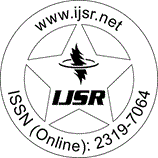Downloads: 51 | Views: 407 | Weekly Hits: ⮙1 | Monthly Hits: ⮙2
Review Papers | Electrical & Electronics Engineering | Bangladesh | Volume 10 Issue 2, February 2021 | Popularity: 7.1 / 10
A Review of Digital FIR Filter Design in Communication Systems
Kamal Hossain, Roni Ahmed, Md. Asadul Haque, Muahmmad Towfiqur Rahman
Abstract: In signal processing, a finite impulse response (FIR) filter settles to zero in finite time. FIR filters can be discrete-time or continuous-time, and digital or analog. FIR filter is widely used in various signal processing and image processing applications because of less area, low cost, low power, and high operation speed. An FIR filter is usually implemented by using a series of delays, multipliers, and adders to create the filter's output. We concentrate on the following three categories: frequency sampling methods, windowing-based methods, and optimization-based methods. We also focus on the communications system, including transmissions equipment, relay stations, tributary stations, and other data terminal equipment. A communications system can even include other communications systems. A good example would be a regional emergency response communications system that connects several different cities and allows them to respond to a disaster by integrating systems they have installed for their police and firefighters. In the end, theperformances of severalFIR design methods are assessed. This article provides a comprehensive overview of the latest developments in finite impulse response (FIR) filter design methods in communication systems.
Keywords: FIR Filter, Communication system, frequency sampling methods, windowing based methods, optimization-based methods
Edition: Volume 10 Issue 2, February 2021
Pages: 1380 - 1391
DOI: https://www.doi.org/10.21275/SR21221133619
Please Disable the Pop-Up Blocker of Web Browser
Verification Code will appear in 2 Seconds ... Wait
